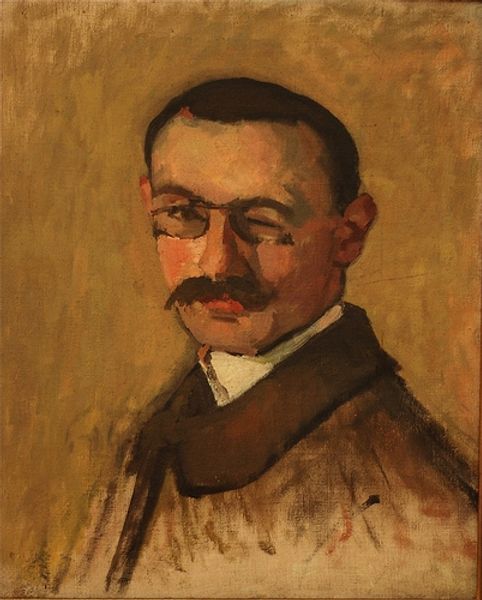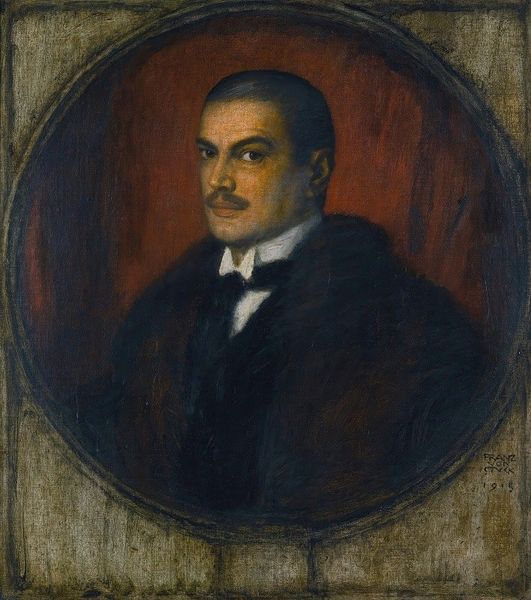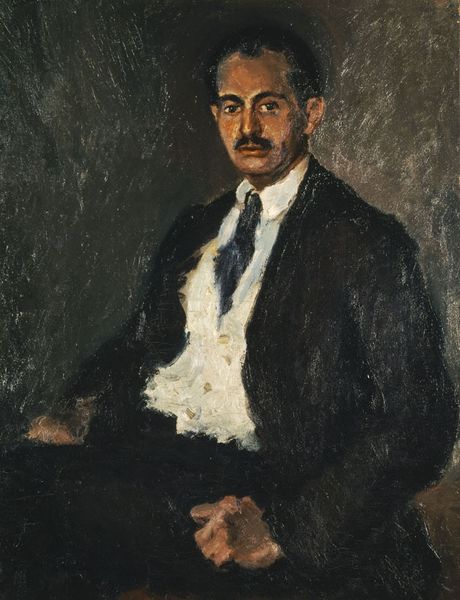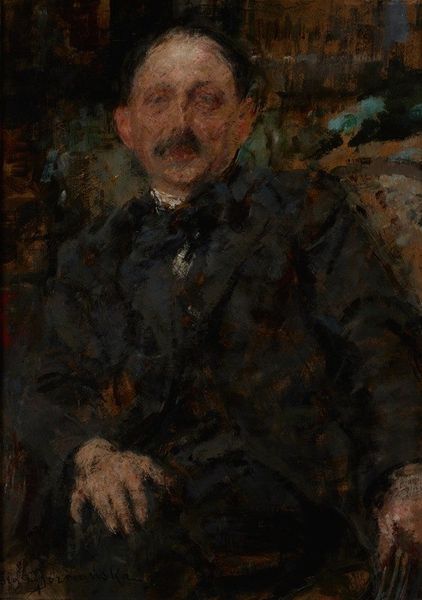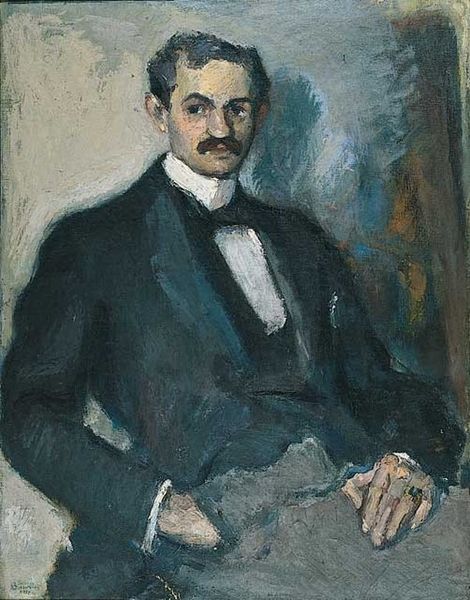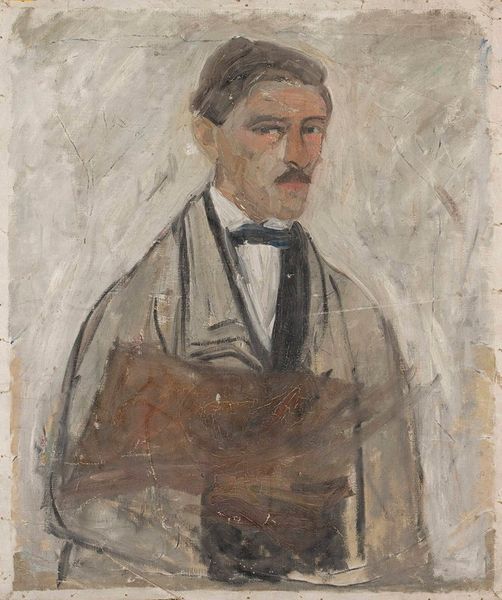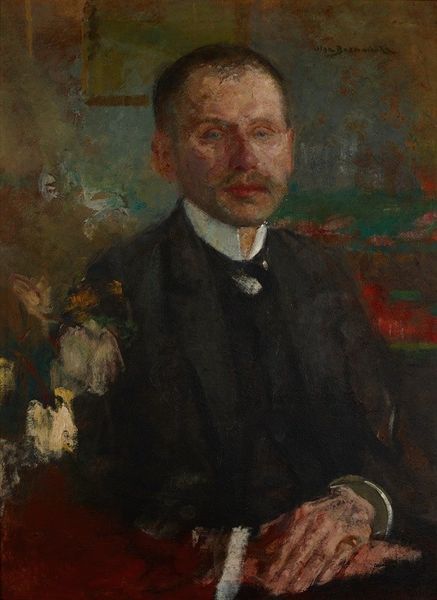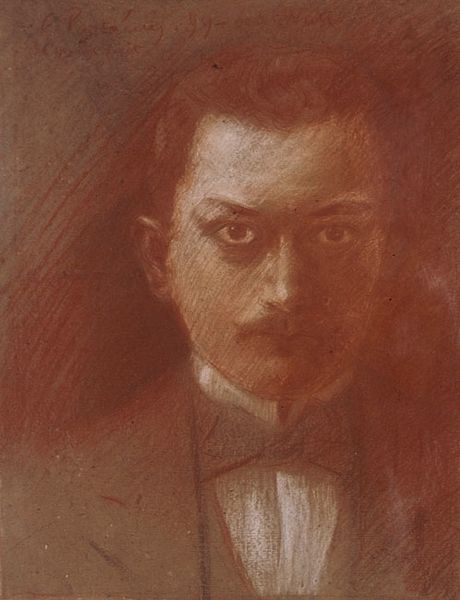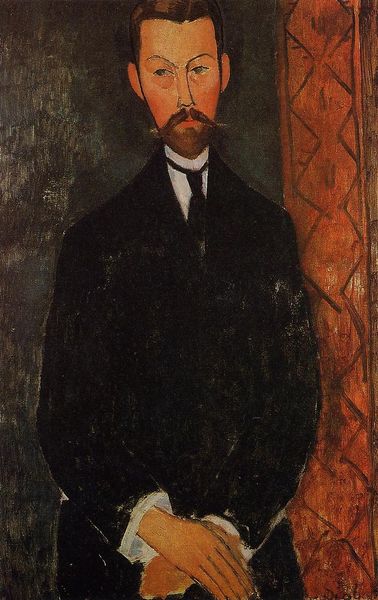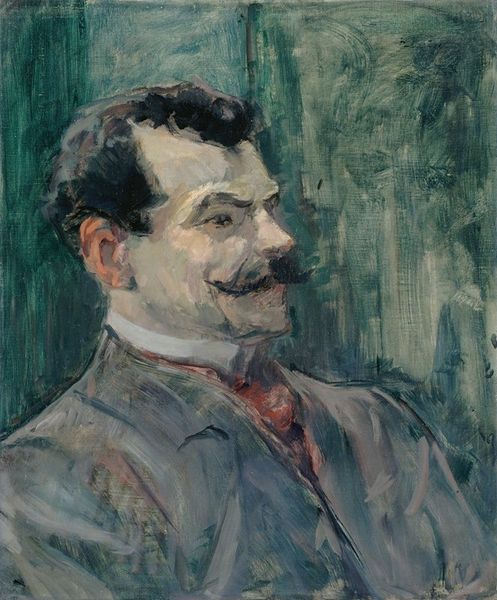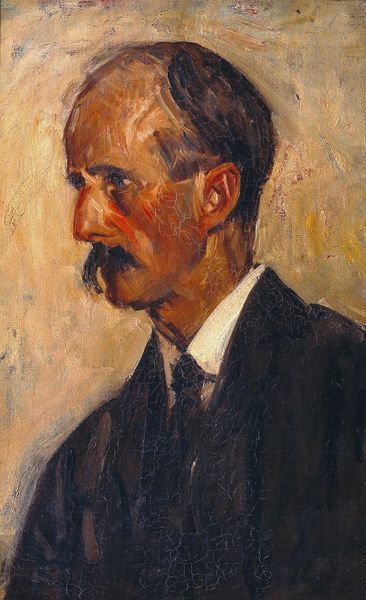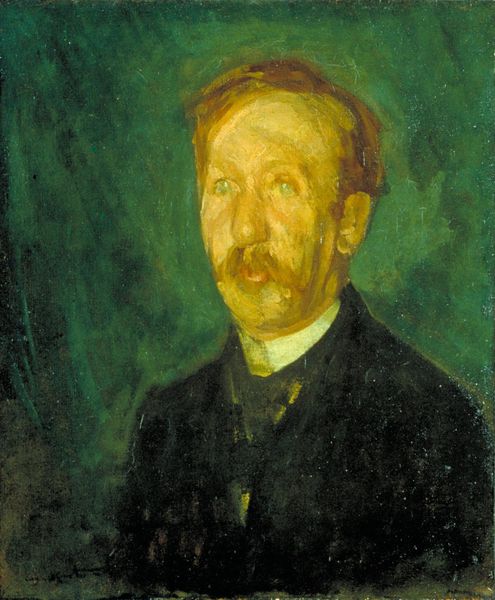
oil-paint
#
portrait
#
oil-paint
#
figuration
#
oil painting
#
portrait art
#
modernism
Copyright: Bela Czobel,Fair Use
Curator: This is Béla Czóbel's "Czóbel 1935," an oil on canvas portrait. It offers an interesting example of modern Hungarian figuration from that period. Editor: The first thing that strikes me is its slightly melancholic feel. There's a formal rigidity to the subject’s pose that's tempered by these incredibly loose, almost gestural brushstrokes. The color palette, that muted blue and reddish brown, contributes to that feeling too. Curator: The handling of the paint definitely moves away from academic realism, which was still very dominant in portraiture in much of Europe in the 1930s. There’s an interesting play between tradition and a more modern sensibility. You can see Czóbel pushing against convention but not abandoning it entirely. The institutional role of portraiture in reinforcing social status at that time is worth considering as well. Editor: Absolutely. While the sitter is undoubtedly from the bourgeois, the rough and free style democratizes this portrait, opening up a space that is very different from that of traditional portraits. Consider the red tie like an avant-garde call in what is overall a somber image; it disrupts what might otherwise be read as conformity. What do you make of that piercing stare? Curator: The direct gaze invites the viewer in, but those deep, dark eyes... almost hollow... prevent us from fully connecting. This disjunction makes it particularly compelling as an object to observe in an art context. He seems disconnected from any narrative that can serve as commentary about his standing in society. Editor: It prompts us to consider what kinds of psychological or social tensions might have been simmering beneath the surface, in interwar Europe more generally. Was this just the artist experimenting, or also hinting at some hidden conflict or insecurity that reflects in the painting’s expressionistic handling of form and emotional expression? Curator: And think, too, about Czóbel’s own life experiences – his involvement in the Fauvist movement earlier in his career in Paris. This certainly inflects the artistic choices at work here. The shadow of the avant-garde and his need to navigate the currents of contemporary portraiture are clear here. Editor: It is so great how an ostensibly simple portrait can resonate and make us look not only at the subject in the picture, but also reflect about history, social context, and aesthetic theory! Curator: It offers such insight into Czóbel's place at that moment. What a valuable artifact!
Comments
No comments
Be the first to comment and join the conversation on the ultimate creative platform.
